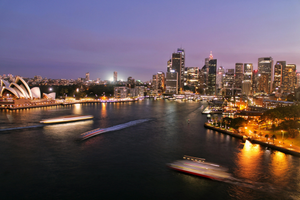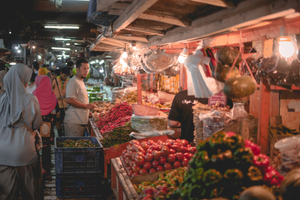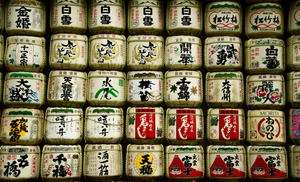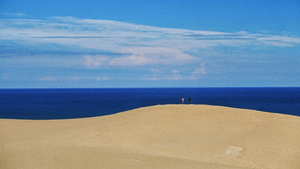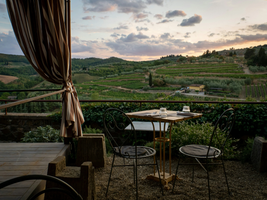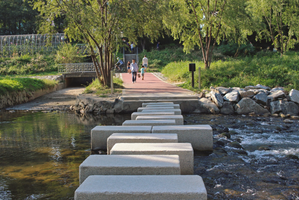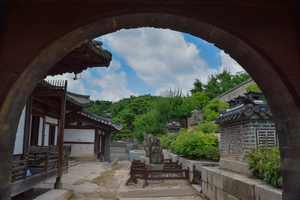The Top 5 Eco Tours in Trinidad

Trinidad, located in the Caribbean Sea and situated just 20 miles off the coast of Venezuela, is a captivating island. While it’s known for being the birthplace of the famous steel drum, it’s not your typical tranquil, sandy beach destination. The island’s rugged terrain, big waves, and rocky shores offer more adventure than most other Caribbean islands. Below is a compilation of my top 5 eco tours to experience in Trinidad.
Take a Boat to Paria Waterfall
During my stay at the remarkable Le Grande Almandier, which had only seven occupants at the time, we all embarked on a tour together. We boarded a fast, little boat that whisked us across the northern coastline to Paria Falls. Once we arrived at the bay, we had an easy 30-minute hike to the falls. Paria Falls is beloved by both tourists and locals alike for the beautiful colors of its pool. Some of the more daring travelers scaled the slippery rocks and plunged into the water. Following the falls, we had lunch on the beach accompanied by rum punch, additional rock climbing and diving, before returning to the hotel. On the way back, we were caught in a severe storm that caused the boat to bounce violently. I was jolted so hard that I believed I had fractured my tailbone, and I even accidentally wet my swimsuit, but that’s a tale for another time. Don’t let this discourage you; it was a fantastic journey that I would happily repeat.
Watch Leatherback Sea Turtles Lay Their Eggs
I had an amazing experience while visiting Trinidad. Prior to my trip, I was unaware that Trinidad and Tobago (TnT) was a prominent breeding spot for sea turtles, but I was thrilled to learn about it. Being an animal lover, I am captivated by these graceful and enigmatic giants. Trinidad and Tobago have recently embraced eco-tourism, and the Le Grande Almandier, located in the quiet fishing village of Grande Riviere, which is one of Trinidad’s largest nesting beaches, is conveniently situated near an eco-tourism center that offers several tours. The guides are exceptional and genuinely concerned about the welfare of the animals. With their assistance, we were able to sneak onto the back of the beach during nesting season to see multiple Leatherback turtles on the sand. Eventually, our guide discovered a turtle in the process of laying eggs, and we all watched in awe.
Words cannot express the emotions I felt while witnessing a 2,000lb turtle digging a hole in the sand to lay its eggs, covering it carefully with sand to conceal it from predators, and then slowly returning to the sea, tired and gasping, under the light of the moon. The only way to describe it is to say that it made me feel small and insignificant, but in the best possible way.
Mountain Bike/Bushwack A New Trail on Mt. Harris
During my visit to Trinidad, I decided to go on a rainforest mountain bike ride with Courtenay Rooks and the Paria Springs Eco Community. I anticipated that it would be challenging but manageable. However, it turned out to be much more difficult than I had anticipated.
The narrow, intricate river trails I was accustomed to in Wisconsin were insufficient preparation for biking up a mountainside in 95ºF heat and 90% humidity. The incline was so steep that once you lost momentum, it was impossible to regain it. Attempting to pedal forward only caused the back tire to spin continuously on the damp vegetation. We eventually abandoned the bikes, took out our machetes, and formulated a new strategy. I assisted Courtenay (or more accurately, attempted not to harm myself) in locating an old trail that he was intending to revive for a new tour. It was a delightful experience, and the leisurely pace allowed us to spot rare birds, listen to the howler monkeys, and introduced me to the intimidating Golden Orb-Weaver spider.
Explore East-Indian Culture of Trinidad
Christopher Columbus once mistook Trinidad and the Caribbean for India, leading to the region being named the West Indies and the indigenous people being called “Indians.” Interestingly, Trinidad now has a large population of people with East Indian heritage, and their culture has greatly influenced the island.
If you visit Chaguanas, located in the West-Central region of Trinidad, you’ll feel like you’re in the Ganges basin with Bollywood films playing in theaters, Chutney music on the radio, and Hindu temples dotting the area. A unique blend of traditional North Indian cuisine with Caribbean ingredients creates delicious dishes that can’t be found elsewhere.
One such popular dish is the Trinidadian “Double,” a breakfast sandwich sold on the street. It consists of deep-fried naan bread, curried chickpeas with chutney (often made with mango, tamarind, or coconut), and a little Scotch Bonnet pepper sauce for a spicy kick. You may want to indulge in two, and coconut water from street vendors makes for a refreshing accompaniment.
Birding at the Asa Wright Nature Center
Thought to be the first nature centre in the West Indies, the Asa Wright Nature Centre is located on an old cocoa, coffee, and citrus plantation in the island’s north-central region. At 1,200 feet above sea level, it is situated in the foothills of the North Range, a group of mountains that spans the top of the island and is covered in tropical rainforest.
Even though I was unable to visit the centre, I would have loved to take a tour with a guide to see Trinidad’s magnificent variety of plants and animals. Trinidad has greater biodiversity than you may imagine because it was once a continent, has tropical woods, and is now an island.
The Centre reports that there are “… 97 native mammals, 400 birds, 55 reptiles, 25 amphibians, and 617 butterflies, as well as over 2,200 species of flowering plants.” This is incredibly astounding for an island that is only 1,841 square miles, or roughly half the size of Puerto Rico. You can join the regularly scheduled guided tours. Bring some additional cash because lunch at the centre is not included.
